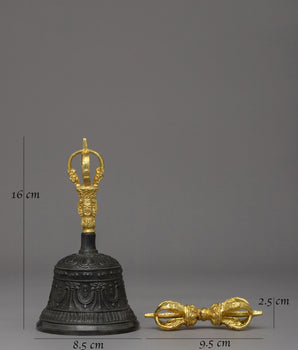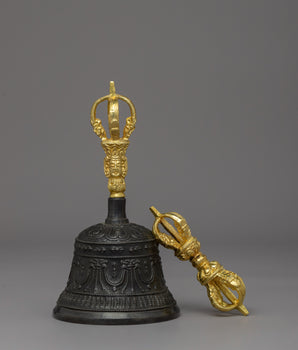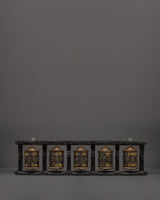

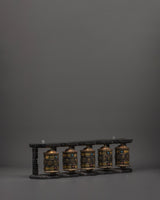
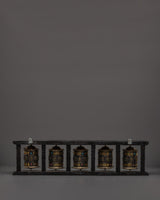
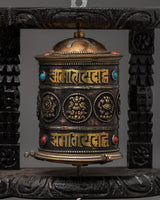
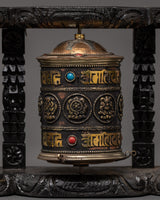
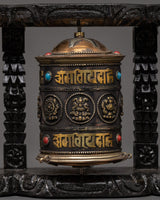
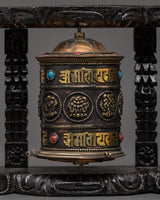
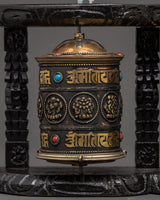
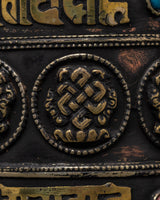
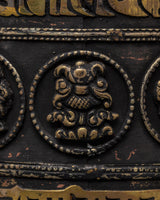


Five Tibetan Prayer Wheels on a Wooden Frame | Mantra Spinners

100% AUTHENTIC

HANDMADE

FREE SHIPPING
Five Tibetan Prayer Wheels on a Wooden Frame | For Zen Home Decor
--------------------------------------------------------
Size: 18cm (Height) x 65.5cm (Width)
Weight: 2.07kg
Materials: Copper body, Brass, White metal, Wood
--------------------------------------------------------
About our Prayer Wheel
This set of five Tibetan Prayer Wheels on a Wooden Frame will bring serenity, presence, and spiritual energy into your environment. Each prayer wheel is beautifully crafted, featuring a copper and brass body adorned with white metal and engraved with religious mantras. This special item, beautifully displayed in a wooden frame and decorated with carefully selected jewels, embodies the traditional Tibetan spirit of creativity and purpose. It stands 18cm tall and 65.5cm wide, making it an attractive and meaningful centerpiece for your spiritual shrine, meditation room, or Zen-inspired home design.
These Buddhist mantra spinners are ideal for deepening spiritual practice, encouraging attention, and bringing healing energy into your daily rituals. Whether used for meditation or as a symbol of peace and devotion, this handcrafted prayer wheel set makes an excellent spiritual gift or a sacred home decoration. This outstanding Tibetan spiritual design embodies the peaceful and grounding aura of Himalayan heritage.
Introduction to Prayer Wheel
A prayer wheel is a cylindrical device on a spindle, used in Tibetan Buddhism. It is typically inscribed with the mantra "Om Mani Padme Hum" and rotated by hand as a form of spiritual practice and to accumulate merit. Spinning the wheel is believed to have the same spiritual benefits as reciting the mantra verbally. The use of prayer wheels is widespread in Tibetan Buddhism and has spread to other cultures.
How does the Buddhist Prayer Wheel benefit us?
The benefits associated with rotating the wheel are numerous. It promotes knowledge, compassion, and bodhicitta in the practitioner and enhances siddhis (spiritual powers, such as clairvoyance and precognition). The practitioner can repeat the mantra as often as possible while the wheel is rolling, maintaining a calm, meditative attitude. A Tibetan Buddhist tradition holds that after a practice session, one should dedicate any acquired merits to the benefit of all sentient beings. Then three times Om Ah Hum. This is usually among Tibetans after finishing any Buddhist practice, including the prayer wheel exercise.
How do you set up your own Buddhist Shrine?
• Find a clean, quiet, and uncluttered spot
• Set up an altar table and cover it with an altar cloth that calls to you
• Place your sacred item at the center






















